The recent quality and appeal of CG-heavy films like the upcoming Cats, and Disney’s remakes of The Lion King and Aladdin have been called into question. The film adaptation of Sonic the Hedgehog has experienced tumultuous development, with a universally reviled design undergoing revision. A desire for a return to 2D animated cinema has been voiced.
In contrast, Detective Pikachu gives me pause because of how good it looks.

Maintaining Design Appeal While Entering a 3D World
This is undoubtedly because the movie successfully keeps their designs stylized and visually attractive, finding a good balance between naturalism and imagination. According to the LA Times, the creative team’s approach focused on preserving the silhouettes of the original 2D designs while adding more realistic textures, and applying more naturalistic animal movement.
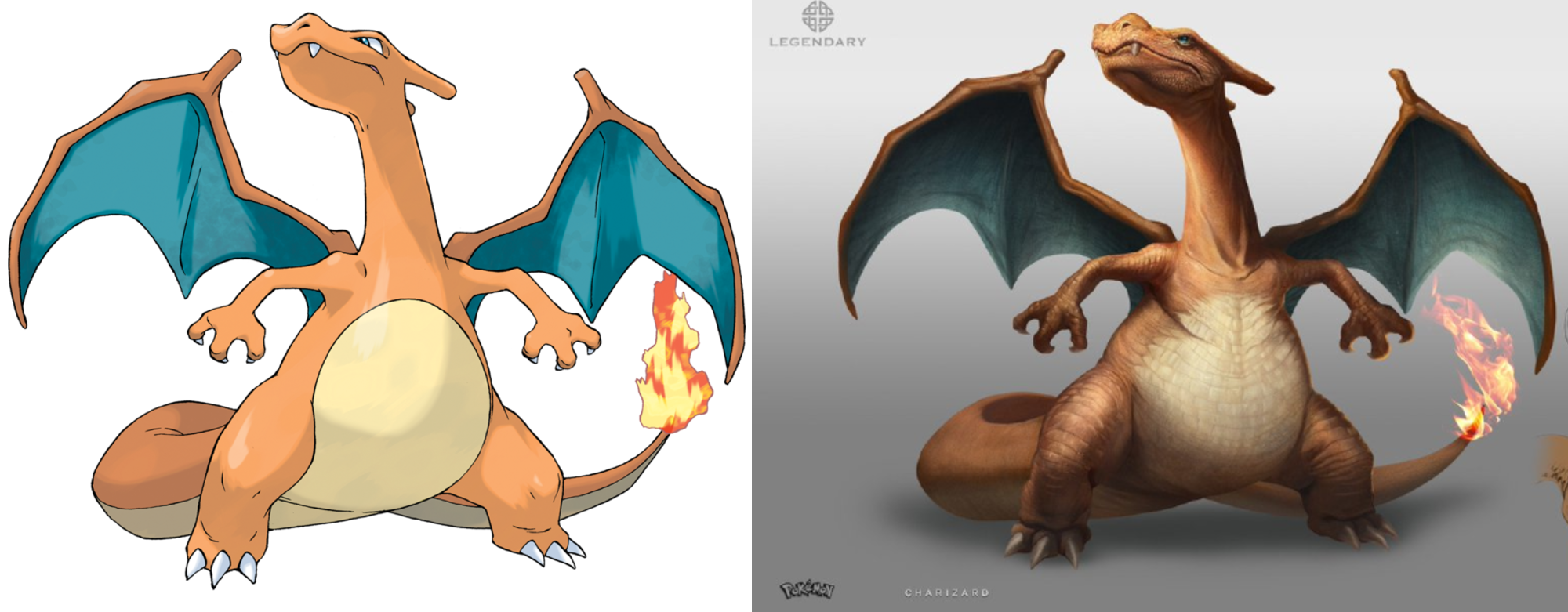
Left: Promotional art of Charizard from the Pokémon franchise. Right: Concept art of Charizard by RJ Palmer. Notice their matching silhouettes and differing textures.
Additionally, the success of the visuals helped create a uniquely immersive and emotional experience with an actual vision of what it would look like to live in a world shared with Pokémon. It’s truly earned its place as the first good video game movie.
While going more stylized was absolutely the best call and the more interesting choice, part of the development of the visual direction in Detective Pikachu is built upon the work of an artist that Legendary Pictures originally recruited for his naturalistic remix of Pokemon—RJ Palmer.
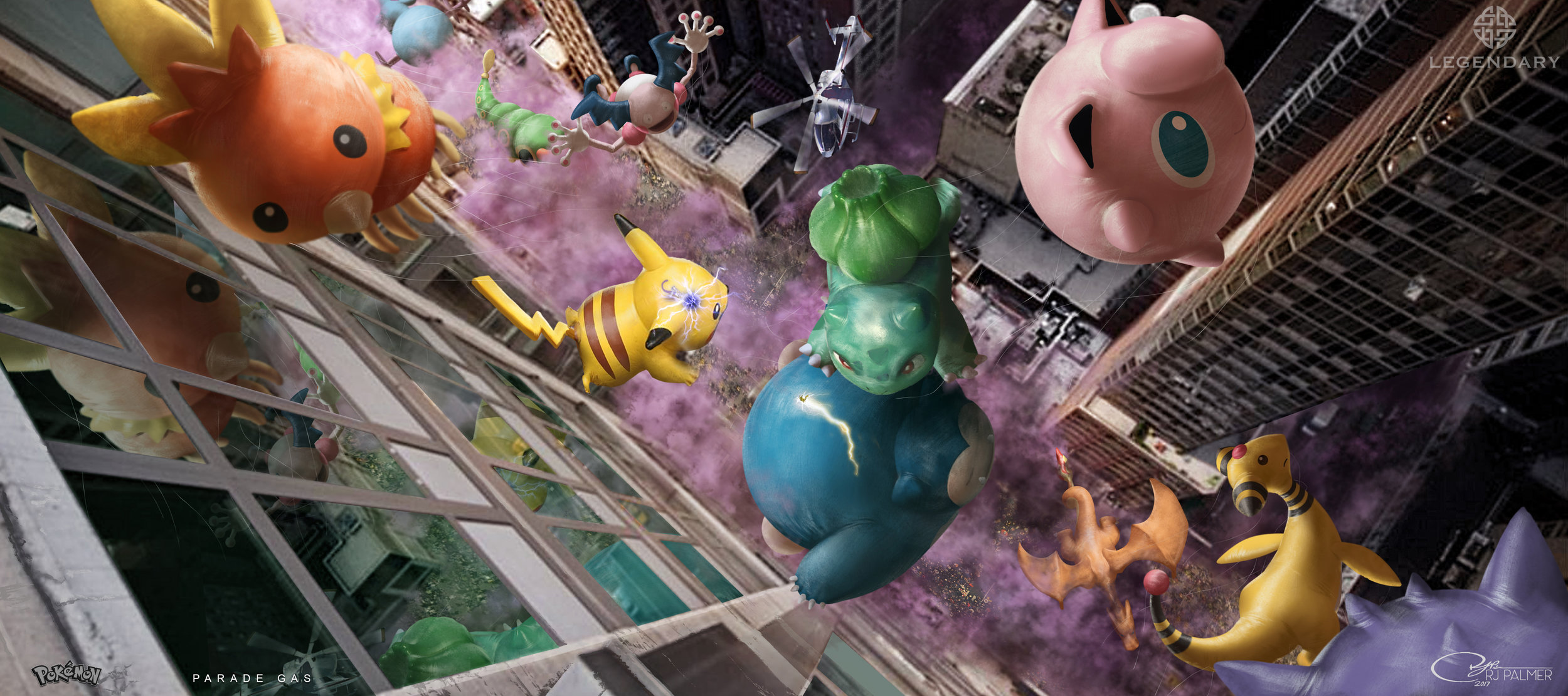
RJ Palmer’s concept art for a climactic scene in Detective Pikachu, reminiscent of the Poké Floats stage from Super Smash Bros. Melee.
First Film Credit
While exhibiting at Anime Expo’s Artist Alley, Palmer was able to talk a bit about his work.
“It’s very exciting,” Palmer said. “The first movie I ever worked on actually happened, so that’s actually cool.”
According to Palmer, Legendary found his work while researching Pokémon. In retrospect, it’s entirely believable; Palmer’s realistic Pokémon fan art had previously gone viral online, and its presence remained imprinted on the Internet.
More Naturalistic Pokémon
Regularly impressive, sometimes grotesque, occasionally adorable, always captivating—Palmer’s realistic Pokémon series focused on grounding the Game Freak bestiary in more biologically sound principles. Ghost Pokémon like Ghastly, Haunter, and Gengar were reimagined as violet bats mistaken for supernatural beings. The Dragonite line gained a more amphibian look, even resembling an axolotl. Scyther is reimagined as a dinosaur with some insectoid traits.
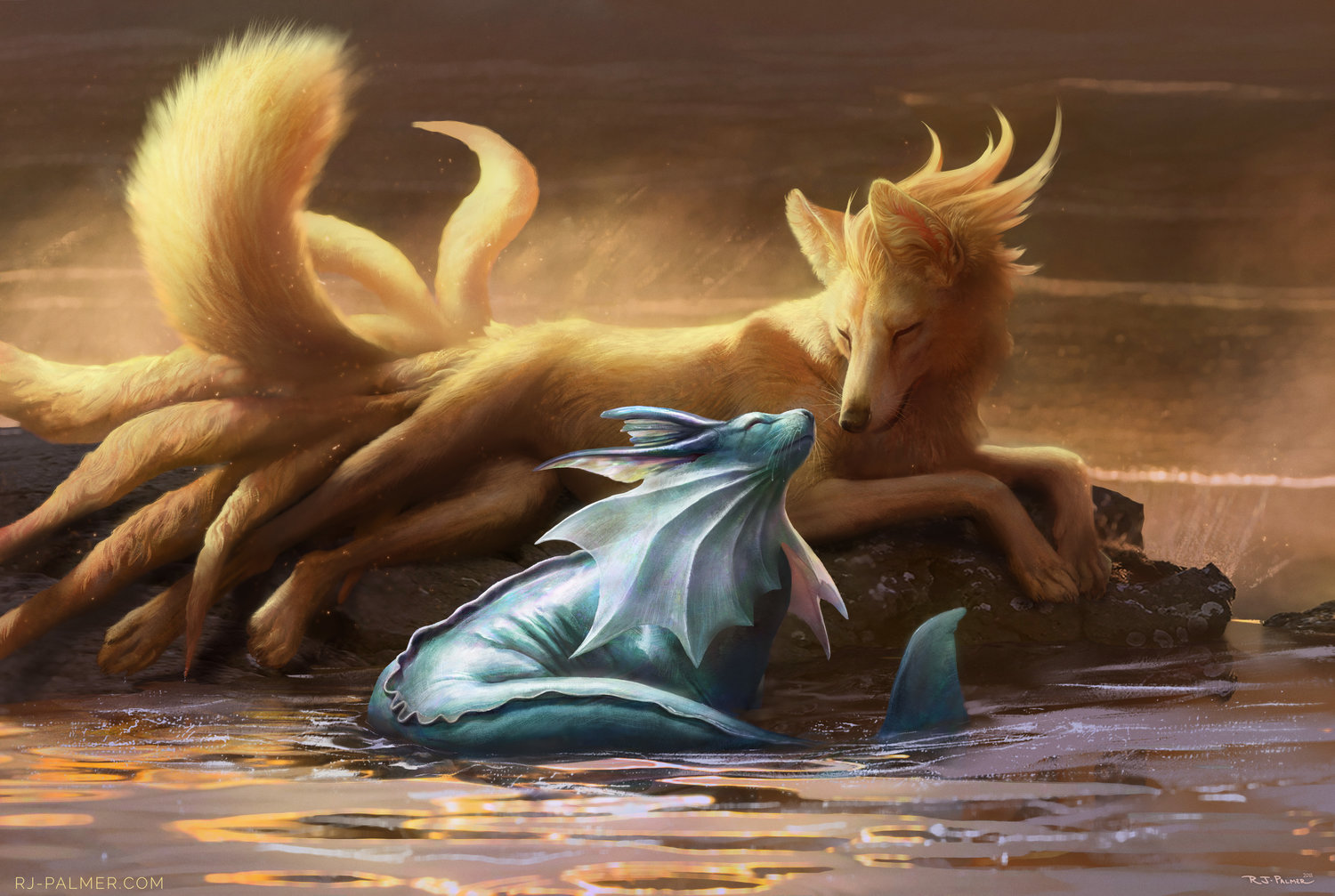
RJ Palmer’s illustration of Vaporeon and Ninetales in his realistic Pokémon series.
Palmer said that he does “a ton of research” for the realistic Pokémon, researching animals and other details about nature.
“People really liked them, and I kept doing more,” Palmer said.
Joining the Film Crew
Based on Palmer’s brief account, joining Detective Pikachu’s art department happened quickly. Legendary contacted him, and he was working on the movie within a week.
“[I] worked on a little bit of everything,” Palmer said. He explained that besides obviously designing the Pokémon, he also covered environments and key art, which “illustrate what scenes in the movie might look like.”
In an interview with AllGamers, Palmer said he also answered a lot of questions about Pokémon within the art department since he had more knowledge of the franchise and more experience with it.
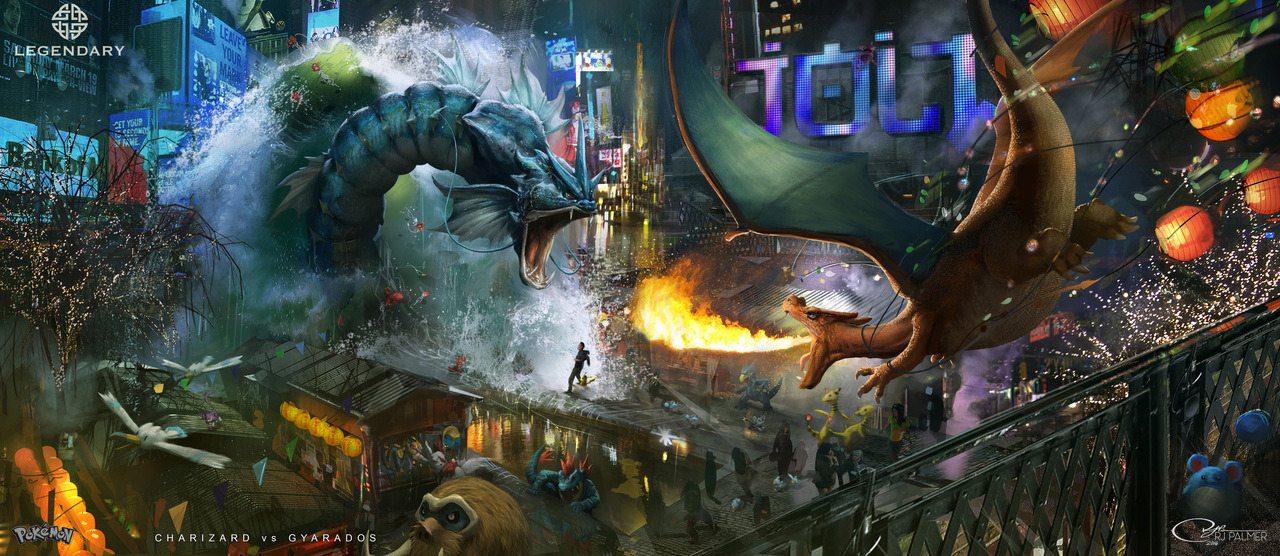
RJ Palmer’s concept art depicting an earlier version of the scene with Charizard and Gyarados, which previously featured more of a confrontation between the two.
Like other film artists, Palmer worked on his share of material that ultimately didn’t make it into the final release of Detective Pikachu. He created concept art for a Pokémon museum set piece—including some fossilized skeleton displays—that featured Rayquaza and Tyrantrum. While another fascinating piece of worldbuilding, this scene never made it into the film. (Perhaps it will be repurposed for the sequel?)
“I like making fossils from fantasy animals,” Palmer remarked to an Anime Expo attendee who complimented his fossil scene concept art.
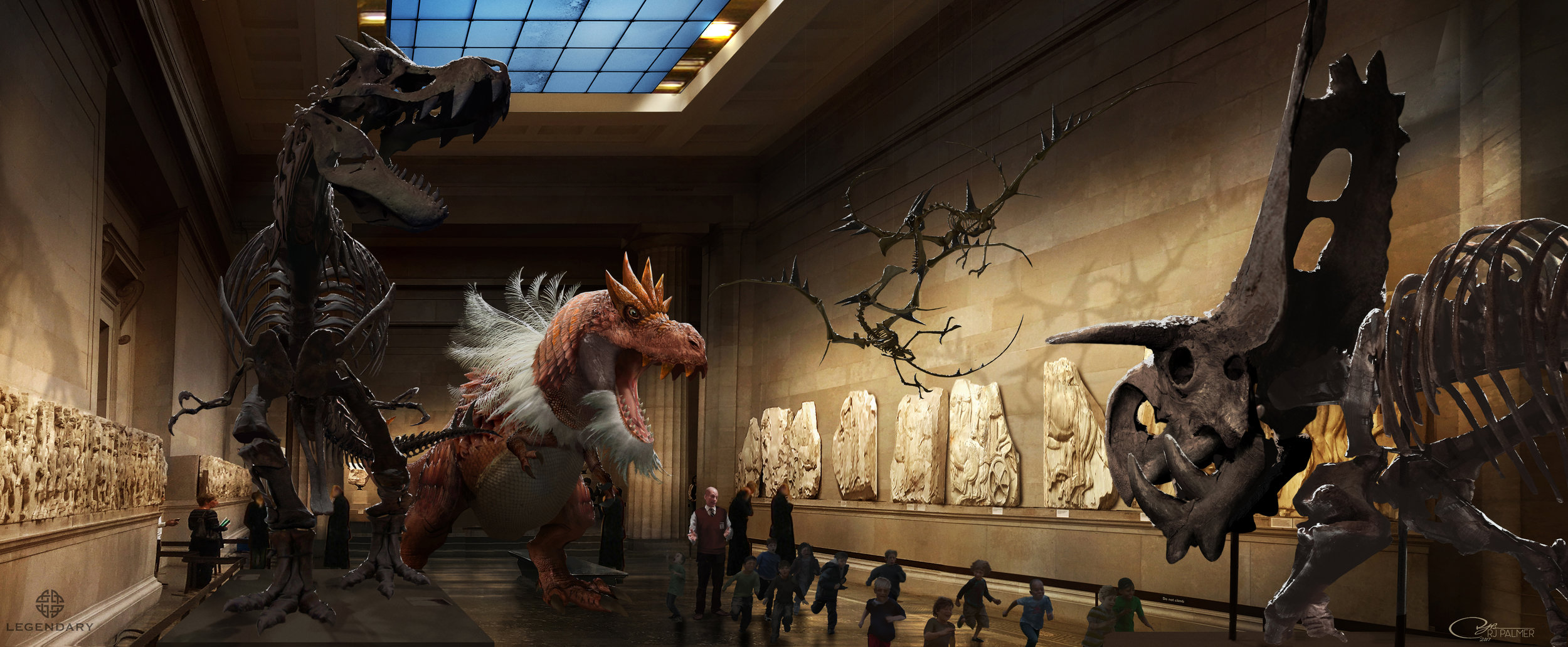
According to a post on RJ Palmer’s blog, the Tyrantrum in the museum concept art was actually a Ditto in disguise. This sounds reminiscent of a supporting character that would prove key in the final version of the film: Ms. Norman, Howard Clifford’s disguised Ditto.
Creature Appeal
While Palmer has applied his realistic style to other monster-collecting franchises like Digimon, he has still drawn far more Pokémon.
Sharing common ground with many, Palmer said that he grew up playing Game Freak’s flagship series. He added that Pokémon was “exactly up [his] alley” since he had also always gravitated toward creature design.
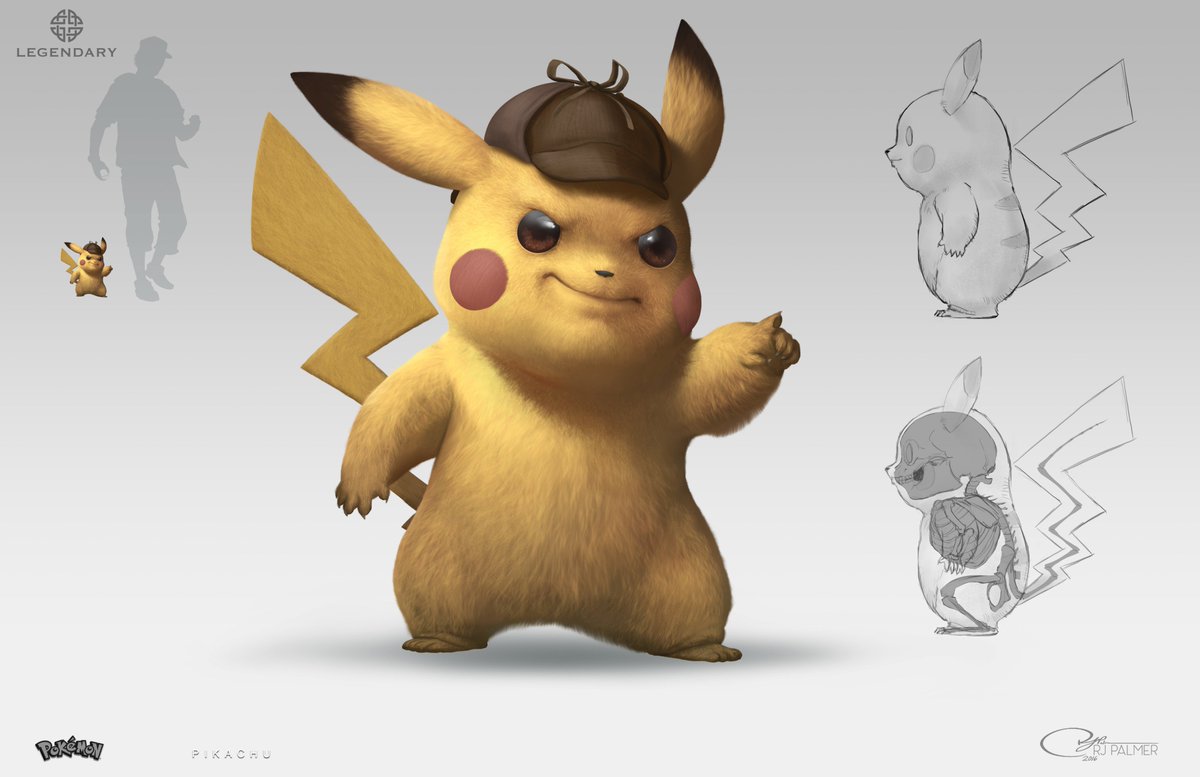
One of RJ Palmer’s concepts for the eponymous character.
“I like to draw monsters,” Palmer said.
And in different ways, as his stylized Pokemonster Hunter enamel pins at Anime Expo demonstrated. They’re a striking contrast with his realistic Pokémon series, but they’re just as visually appealing.
“[They’re] sort of a mash-up of Pokémon and Monster Hunter,” Palmer said when describing his pins. “Like little abstractions.”
Besides showcasing pins of Pokémon in some of the more iconographic parts of Monster Hunter’s style, Palmer has also made trading cards of Monster Hunter’s creatures in Pokémon’s style.
The Pokemonster Hunter pins and cards are a good reminder of Palmer’s versatility as an artist.
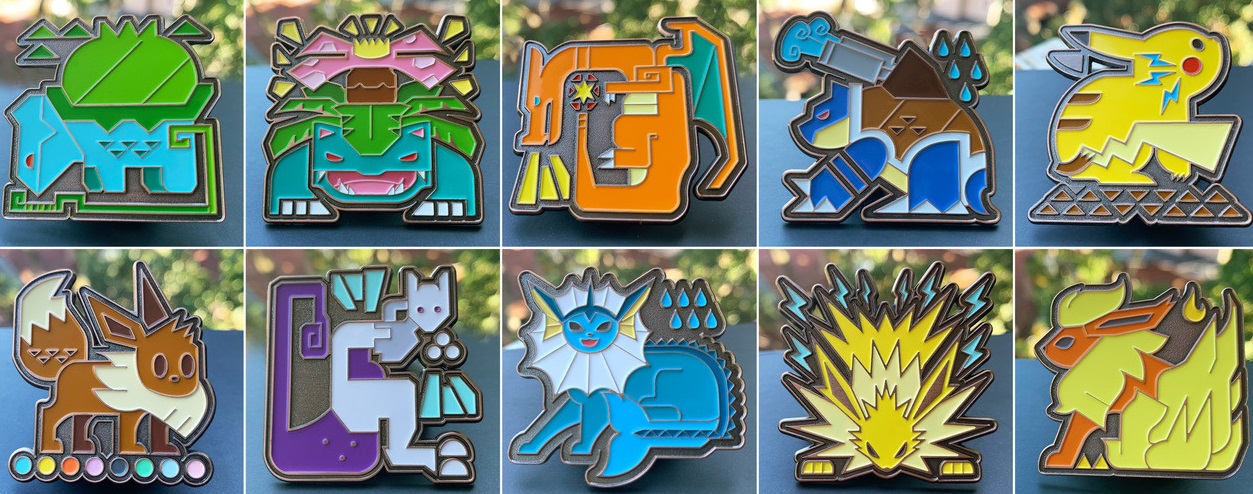
RJ Palmer’s Pokemonster Hunter enamel pins are available on his store.
Latest posts by Alyssa Wejebe (see all)
- From Fan Art to Film Crew: RJ Palmer Talks Detective Pikachu - September 4, 2019
- Women in Gaming: Borderlands 3 Mission Designer Kate Pitstick - August 20, 2019
- Equipping Your Emotions in Crystar - August 14, 2019
